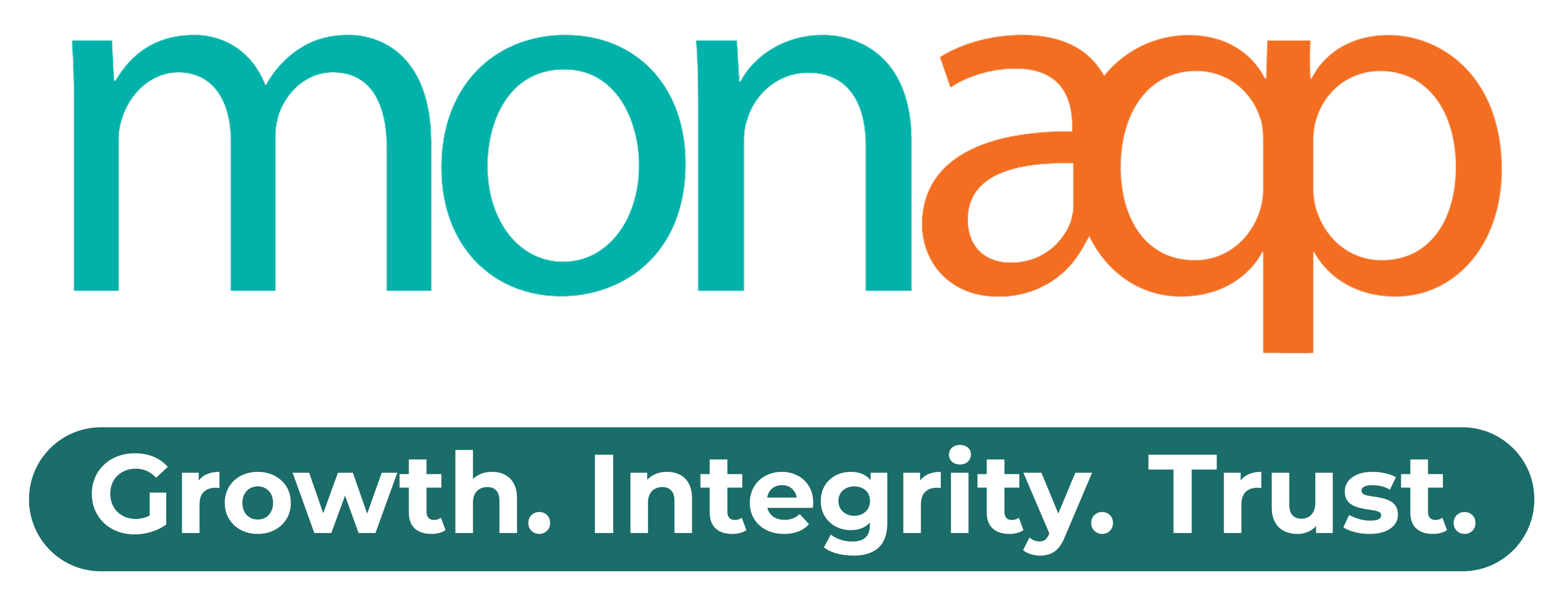DevOps has revolutionized the software development landscape by integrating development and operations teams to improve collaboration, efficiency, and software delivery. DevOps tools play a vital role in automating processes, managing infrastructure, and facilitating continuous integration and deployment. In this guide, we will explore the top DevOps tools used in software development today. We will delve into their features, benefits, and real-world examples to help you understand their capabilities and choose the right tools for your DevOps workflow.
Table of Contents:
1.Introduction to DevOps
2.Benefits of DevOps Tools
3.Key Considerations when Choosing DevOps Tools
4.Continuous Integration and Deployment Tools
4.1 Jenkins
4.2 CircleCI
4.3 Travis CI
Configuration Management Tools
5.1 Ansible
5.2 Chef
5.3 Puppet
Containerization Tools
6.1 Docker
6.2 Kubernetes
6.3 AWS ECS
Infrastructure as Code Tools
7.1 Terraform
7.2 AWS CloudFormation
7.3 Google Cloud Deployment Manager
Monitoring and Logging Tools
8.1 Prometheus
8.2 ELK Stack (Elasticsearch, Logstash, Kibana)
8.3 New Relic
Collaboration and Communication Tools
9.1 Slack
9.2 Jira
9.3 GitHub
Conclusion
Introduction to DevOps:
DevOps is an approach that combines software development (Dev) and IT operations (Ops) to foster collaboration, streamline processes, and accelerate software delivery. DevOps emphasizes automation, continuous integration, continuous delivery, and continuous deployment to enable faster, more reliable software releases.
Benefits of DevOps Tools:
DevOps tools provide numerous benefits for software development teams, including:
- Automation of repetitive tasks, reducing manual effort and increasing efficiency.
- Improved collaboration and communication between development and operations teams.
- Streamlined software delivery pipelines, enabling faster time-to-market.
- Increased deployment frequency and shorter lead times for changes.
- Enhanced stability, reliability, and scalability of software applications.
- Continuous monitoring and feedback loops for better visibility into system performance.
Key Considerations when Choosing DevOps Tools:
When selecting DevOps tools for your software development process, consider the following factors:
- Compatibility with your technology stack and existing infrastructure.
- Scalability and ability to handle the size and complexity of your projects.
- Community support and active development for ongoing tool enhancements.
- Integration capabilities with other tools in your DevOps toolchain.
- Ease of use, learning curve, and availability of documentation and tutorials.
- Cost considerations, including licensing fees or subscription models.
Continuous Integration and Deployment Tools:
Continuous Integration (CI) and Continuous Deployment (CD) tools automate the process of building, testing, and deploying software changes. These tools facilitate the integration of code changes from multiple developers and ensure that the software remains stable throughout the development lifecycle.
4.1 Jenkins:
Identifying the most influential touchpoints is crucial for effective cross-channel marketing. Not all touchpoints hold equal weight in the customer’s decision-making process. Some touchpoints may have a more significant impact on their purchasing behavior or brand perception.
By analyzing customer data, conducting surveys, and leveraging analytics tools, businesses can determine the key touchpoints that significantly impact customer engagement and conversion. This knowledge allows marketers to focus their efforts and resources on the channels and interactions that matter most to their target audience.
4.2 CircleCI:
CircleCI is a cloud-based CI/CD platform that simplifies the process of building, testing, and deploying applications. It offers a user-friendly interface and supports parallel and distributed testing, allowing for faster feedback on code changes. CircleCI integrates with popular source code repositories and offers extensive documentation and community support.
Example:
A startup company uses CircleCI to automate their CI/CD pipeline for their web application. CircleCI automatically builds the application, runs tests, and deploys it to different environments based on predefined workflows. The team can easily track build status, test results, and deployment history through the CircleCI dashboard.
4.3 Travis CI:
Travis CI is a CI/CD platform that provides seamless integration with GitHub repositories. It allows developers to automate the building, testing, and deployment of their applications. Travis CI supports various programming languages and frameworks and provides flexible configuration options. It offers an intuitive user interface and extensive documentation.
Example:
An open-source project hosted on GitHub utilizes Travis CI for continuous integration. Whenever a new pull request is submitted, Travis CI automatically builds the project, runs tests, and generates reports. The project maintainers can review the test results and ensure that the code changes meet the project’s quality standards before merging them into the main branch.
Configuration Management Tools::
Configuration management tools automate the process of configuring and managing infrastructure resources. These tools enable teams to provision servers, manage software configurations, and ensure consistency across different environments.
5.1 Ansible:
Ansible is an open-source configuration management tool that simplifies infrastructure automation. It uses a declarative language to describe the desired state of systems and performs necessary configurations to achieve that state. Ansible allows for easy scalability, supports agentless architecture, and provides extensive community support.
Example:
A DevOps team uses Ansible to automate the provisioning and configuration of servers in a cloud environment. With Ansible playbooks, they define the desired server configurations and can easily replicate the setup across multiple instances. Ansible helps ensure consistency and reduces the manual effort required for server management.
5.2 Chef:
Chef is a powerful configuration management tool that uses a domain-specific language (DSL) to define infrastructure configurations. It follows an agent-based architecture, where a Chef client is installed on each managed system, allowing for efficient configuration management and deployment. Chef provides a wide range of resources and community-contributed cookbooks.
Example:
A large-scale e-commerce company leverages Chef to manage their complex infrastructure. They use Chef recipes and cookbooks to define and maintain the desired state of their servers, ensuring consistent configurations across multiple environments. Chef’s scalability and extensibility enable them to efficiently manage a large number of servers and applications.
5.3 Puppet:
Puppet is a widely adopted configuration management tool that automates infrastructure provisioning and configuration. It uses a declarative language to define infrastructure configurations and manages the desired state of systems. Puppet supports a client-server architecture and provides a vast library of pre-built modules for common infrastructure tasks.
Example:
A software development team uses Puppet to manage their infrastructure across multiple data centers. With Puppet manifests, they define the desired configurations and apply them to the target systems. Puppet ensures that the configurations are maintained consistently, reduces manual errors, and enables efficient scaling of their infrastructure.
Containerization Tools:
Containerization tools enable the creation and management of lightweight, isolated software containers that encapsulate applications and their dependencies. Containers provide portability, consistency, and efficiency in deploying software applications across different environments.
6.1 Docker:
Docker is a popular containerization platform that allows developers to package applications and their dependencies into containers. It provides a consistent environment for running applications, regardless of the underlying infrastructure. Docker simplifies the deployment process, improves scalability, and facilitates the adoption of microservices architecture.
Example:
A software development team utilizes Docker to containerize their microservices-based application. They define Dockerfiles that specify the application dependencies and configurations. With Docker, they can easily create, distribute, and run containers on different machines, ensuring consistent deployment across development, testing, and production environments.
6.2 Kubernetes:
Kubernetes is a container orchestration platform that automates the deployment, scaling, and management of containerized applications. It provides a robust set of features for load balancing, service discovery, and fault tolerance. Kubernetes simplifies the management of complex containerized applications in distributed environments.
Example:
A large enterprise leverages Kubernetes to manage their containerized applications in a hybrid cloud environment. They define Kubernetes deployment manifests to specify the desired state of their applications, and Kubernetes takes care of orchestrating the containers across clusters of servers. Kubernetes enables efficient scaling, rolling updates, and self-healing of their applications.
6.3 AWS ECS:
AWS Elastic Container Service (ECS) is a fully managed container orchestration service provided by Amazon Web Services. It simplifies the deployment and management of containerized applications on AWS. ECS integrates seamlessly with other AWS services and provides scalable, highly available infrastructure for running containers.
Example:
A startup company uses AWS ECS to deploy their containerized applications on AWS. They define task definitions and specify container configurations, and ECS takes care of deploying and managing the containers across the AWS infrastructure. With ECS, they benefit from auto-scaling, load balancing, and seamless integration with other AWS services.
Infrastructure as Code Tools:
Infrastructure as Code (IaC) tools allow teams to define and manage infrastructure resources using code. These tools enable version-controlled, automated provisioning and configuration of infrastructure, leading to reproducible and scalable environments.
7.1 Terraform:
Terraform is an open-source IaC tool that allows infrastructure provisioning across various cloud providers and services. It uses a declarative language to define infrastructure configurations as code. Terraform supports a wide range of resources, provides dependency management, and enables infrastructure state management.
Example:
A DevOps team uses Terraform to define and provision their infrastructure resources on multiple cloud providers. They write Terraform configuration files that specify the desired infrastructure state, and Terraform handles the creation and management of the resources. Terraform’s modular and extensible approach simplifies the management of complex infrastructures.
7.2 AWS CloudFormation:
AWS CloudFormation is a service provided by Amazon Web Services for provisioning and managing AWS resources. It uses JSON or YAML templates to define the infrastructure resources and their configurations. CloudFormation enables automated, consistent provisioning of AWS infrastructure and supports a wide range of AWS services.
Example:
A company relies on AWS CloudFormation to manage their AWS infrastructure. They define CloudFormation templates that describe their desired infrastructure, including EC2 instances, load balancers, and databases. CloudFormation provisions and configures the resources based on the templates, ensuring consistent and reproducible infrastructure deployments.
7.3 Google Cloud Deployment Manager:
Google Cloud Deployment Manager is a service offered by Google Cloud Platform for managing infrastructure resources. It allows users to define infrastructure deployments using YAML or Python templates. Deployment Manager automates the provisioning and configuration of resources on Google Cloud Platform, ensuring consistent and reliable deployments.
Example:
A software development team utilizes Google Cloud Deployment Manager to manage their infrastructure on Google Cloud Platform. They define deployment templates that describe the desired infrastructure state, including Compute Engine instances, networking configurations, and Cloud Storage buckets. Deployment Manager provisions and manages the resources based on the templates, simplifying their infrastructure management process.
Monitoring and Logging Tools:
Monitoring and logging tools play a crucial role in ensuring the health, performance, and security of software applications. These tools provide visibility into system metrics, log data, and application performance, enabling proactive monitoring and troubleshooting.
8.1 Prometheus:
Prometheus is an open-source monitoring and alerting system that collects and stores time-series data. It allows users to define custom metrics and provides a flexible querying language for data analysis. Prometheus supports dynamic service discovery and integrates with various data visualization and alerting tools.
Example:
A DevOps team utilizes Prometheus to monitor the health and performance of their microservices architecture. They instrument their applications to expose custom metrics, and Prometheus scrapes and stores the metrics data. With Prometheus, they can create dashboards, set up alerting rules, and gain insights into the system’s behavior and resource utilization.
8.2 ELK Stack (Elasticsearch, Logstash, Kibana):
The ELK Stack, consisting of Elasticsearch, Logstash, and Kibana, is a popular open-source solution for log management and analysis. Elasticsearch stores and indexes log data, Logstash processes and transforms log events, and Kibana provides a web-based interface for log visualization and analysis.
Example:
A company uses the ELK Stack to centralize and analyze logs from their distributed applications. They configure Logstash to collect logs from different sources, apply filters, and send the processed data to Elasticsearch. With Kibana, they can search, visualize, and create dashboards to gain insights into system logs, troubleshoot issues, and monitor application performance.
8.3 New Relic:
New Relic is a cloud-based application performance monitoring (APM) tool that provides real-time insights into the performance of web applications and infrastructure. It offers features such as transaction tracing, error monitoring, and real-user monitoring. New Relic helps identify performance bottlenecks, troubleshoot issues, and optimize application performance.
Example:
A software development team integrates New Relic into their application stack to monitor their web application’s performance. New Relic captures detailed performance metrics, traces transactions across different components, and alerts the team about potential performance issues. With New Relic’s insights, they can proactively optimize their application and ensure a smooth user experience.
Collaboration and Communication Tools:
Implementing effective cross-channel marketing campaigns can pose technical challenges, such as integrating different systems, managing customer data, and ensuring seamless data flow across channels. Businesses should invest in robust marketing technology infrastructure, leverage API integrations, and adopt marketing automation platforms to overcome these challenges.
9.2 Ensuring Data Privacy and Security:
Collaboration and communication tools are essential for fostering effective collaboration among team members, managing project tasks, and facilitating seamless communication throughout the software development lifecycle.
9.1 Slack:
Slack is a popular team communication and collaboration platform that enables real-time messaging, file sharing, and integrations with other tools. It provides organized channels, direct messaging, and notifications, facilitating efficient communication and collaboration among team members.
Example:
A distributed software development team relies on Slack for their day-to-day communication. They create dedicated channels for different projects, enabling discussions, sharing updates, and resolving issues in real-time. Slack’s integrations with other tools, such as CI/CD platforms and project management tools, help streamline communication and provide a central hub for team collaboration.
9.2 Jira:
Jira is a widely used project management and issue tracking tool that helps teams plan, track, and manage their software development projects. It provides features for task management, issue tracking, agile project management, and reporting, allowing teams to effectively manage their development workflows.
Example:
A software development team utilizes Jira to manage their project tasks and track the progress of their software development projects. They create and assign tasks, track their status, and link them to specific issues or user stories. Jira’s agile boards and customizable workflows help them stay organized, collaborate on tasks, and deliver software iterations efficiently.
9.3 GitHub:
GitHub is a web-based platform for version control and collaboration that enables teams to host, review, and collaborate on code repositories. It provides features for code versioning, pull requests, code reviews, and issue tracking. GitHub facilitates seamless collaboration among developers, enabling them to work together on codebases and manage project workflows.
Example:
A development team utilizes GitHub as their code repository and collaboration platform. They create branches, work on features or bug fixes, and submit pull requests for code review. GitHub’s collaboration features, such as inline commenting and pull request reviews, help them collaborate effectively, ensure code quality, and manage their development process.
Conclusion
DevOps tools are integral to successful software development, enabling teams to automate processes, manage infrastructure, and deliver software faster and with higher quality. The top DevOps tools mentioned in this guide, including Jenkins, Ansible, Docker, Prometheus, and GitHub, among others, offer a wide range of features and benefits for different aspects of the DevOps workflow. By understanding their capabilities and considering your specific requirements, you can select the right tools to enhance your software development process and embrace the principles of DevOps



